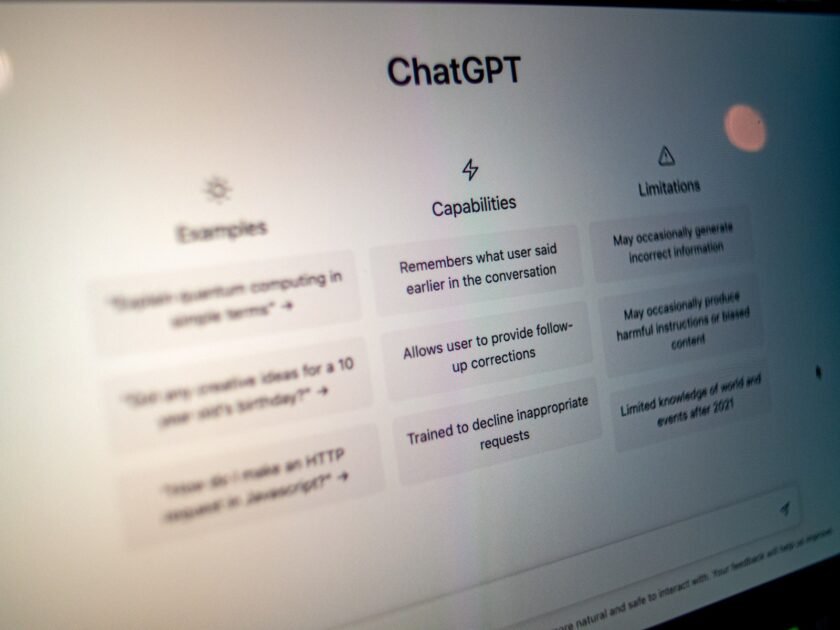ChatGPT is a large language model developed by OpenAI, a research organization founded by entrepreneurs such as Elon Musk, Sam Altman, Greg Brockman, Ilya Sutskever, and others. ChatGPT is one of the most advanced language models in the world, capable of processing natural language input and generating human-like responses.
In this article, we will explore what ChatGPT is, how it works, and its impact on the field of artificial intelligence and natural language processing.
What is a Language Model?
Before diving into ChatGPT, it is important to understand what a language model is. A language model is a computer program that is trained on a large corpus of text data to learn patterns and relationships between words and phrases. This model can then be used to generate text or make predictions about what the next word or phrase in a sentence might be.
Language models are a crucial component of natural language processing, a subfield of artificial intelligence that deals with the interaction between computers and humans using natural language. Applications of natural language processing include language translation, sentiment analysis, chatbots, and voice assistants, among others.
What is ChatGPT?
ChatGPT is a variant of GPT (Generative Pre-trained Transformer), a type of language model that uses deep learning techniques to generate human-like text. GPT was introduced by OpenAI in 2018 and has since been updated with several new versions, including GPT-2 and GPT-3.
ChatGPT is a fine-tuned version of GPT-3 that is specifically designed for conversational applications, such as chatbots and virtual assistants. It has been trained on a massive dataset of conversational data, including social media posts, customer service interactions, and other forms of online conversations.
The purpose of ChatGPT is to provide a more natural and engaging conversational experience for users. By leveraging its massive language processing capabilities, ChatGPT can understand natural language input and generate responses that are contextually relevant and grammatically correct.
How Does ChatGPT Work?
ChatGPT works by utilizing a technique called unsupervised learning. In unsupervised learning, a model is trained on a large dataset of text data without explicit human guidance. The model learns patterns and relationships between words and phrases through a process known as self-supervision.
The training process for ChatGPT involves exposing the model to a massive dataset of conversational data. This dataset includes text from social media, customer service interactions, and other forms of online conversations.
The model then processes this data and learns patterns and relationships between words and phrases. This process is done through a technique called transformer-based learning, which involves breaking down the input text into smaller components called tokens and processing them in parallel using a multi-layer neural network.
Once the model has been trained, it can generate human-like responses to natural language input. This is done by feeding the input text into the model and allowing it to generate a response based on the patterns and relationships it has learned during the training process.
Impact of ChatGPT
ChatGPT has had a significant impact on the field of natural language processing and artificial intelligence. Its ability to generate human-like text has opened up new possibilities for conversational applications, such as chatbots and virtual assistants.
One of the most significant impacts of ChatGPT has been its ability to reduce the need for human intervention in customer service interactions. Chatbots powered by ChatGPT can handle a wide range of customer queries and provide contextually relevant responses, reducing the need for human customer service representatives.
In addition to its practical applications, ChatGPT has also sparked discussions about the ethical implications of language models. Critics have raised concerns about the potential for language models to be used for malicious purposes, such as generating fake news or
deepfake videos. There are also concerns about the potential for bias in language models, as they may learn and perpetuate existing biases and stereotypes in the data they are trained on.
To address these concerns, OpenAI has implemented several measures to ensure responsible use of language models, including limiting access to the full version of GPT-3 and providing guidelines for ethical use.
Another impact of ChatGPT is its potential for language translation. Language translation is a challenging problem in natural language processing, as it requires understanding the nuances of both the source and target languages. ChatGPT’s ability to generate natural language in multiple languages could potentially revolutionize the field of language translation.
ChatGPT has also had a significant impact on the field of creativity. Its ability to generate human-like text has been used to create new forms of literature and art, including poetry, stories, and music.
Limitations of ChatGPT
While ChatGPT is a powerful language model, it does have its limitations. One of the main limitations is its lack of common sense knowledge. ChatGPT relies solely on the patterns and relationships it has learned from the training data, which may not include knowledge about the physical world or common sense reasoning.
Another limitation of ChatGPT is its tendency to generate generic responses. Because it has been trained on a massive dataset of text data, ChatGPT may generate responses that are contextually relevant but lack personalization or specificity.
Finally, there are limitations to the types of conversations that ChatGPT can handle. While it has been trained on a wide range of conversational data, it may struggle with more complex or nuanced conversations that require a deeper understanding of context and background knowledge.
Conclusion
In conclusion, ChatGPT is a powerful language model that has had a significant impact on the field of natural language processing and artificial intelligence. Its ability to generate human-like text has opened up new possibilities for conversational applications, such as chatbots and virtual assistants.
While ChatGPT has its limitations, its potential for language translation and creativity makes it an exciting area of research and development. As language models continue to evolve and improve, it is likely that we will see even more groundbreaking applications in the years to come.

As an architecture and interior designer, I am passionate about creating spaces that inspire and delight those who inhabit them. With over a decade of experience in the industry, I have honed my skills in both the technical aspects of design and the art of crafting beautiful, functional spaces.
After earning my degree in architecture, I began my career working for a prestigious firm where I was exposed to a wide range of projects, from commercial buildings to high-end residential properties. During this time, I developed a keen eye for detail and a deep appreciation for the importance of form and function in design.
In recent years, I have struck out on my own, founding my own design studio where I have been able to further explore my passion for interior design. I believe that a well-designed space can transform the way people live and work, and I take pride in working closely with clients to understand their needs and create spaces that exceed their expectations.
Throughout my career, I have been recognized for my innovative and creative approach to design, and have been honored with a number of awards and accolades. When I’m not working on design projects, you can find me exploring the outdoors or seeking inspiration in the world around me.


